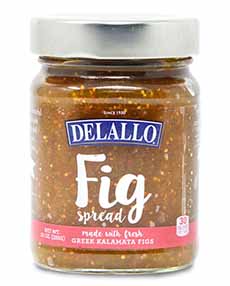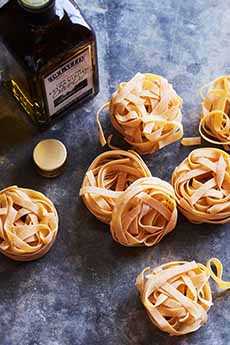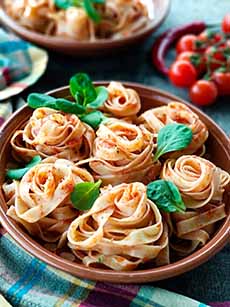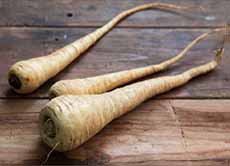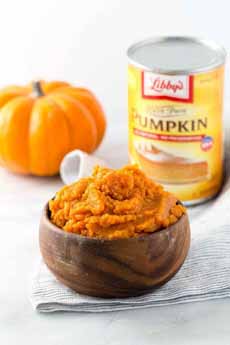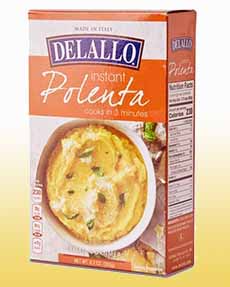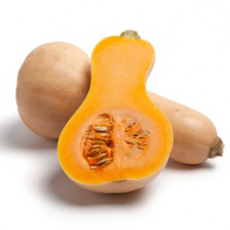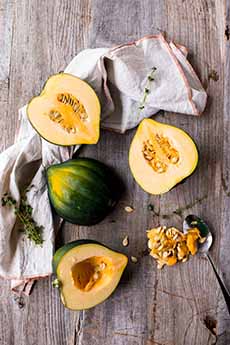|

[1] A seasonal carbonara, with bacon and apples. The recipe is below (photos #1 and #2 © Delallo).

[2] If you can’t find mezzi rigatoni locally, head to DeLallo’s online store.

[3] Mezzi rigatoni close up (photo © J. Eltovski | Morguefile).
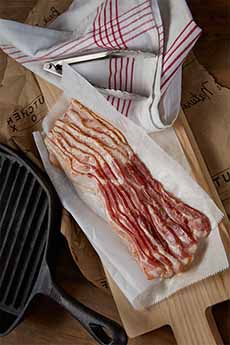
[4] This delicious bacon is from Butcherbox, a quality meat subscription service with beef, pork and poultry.
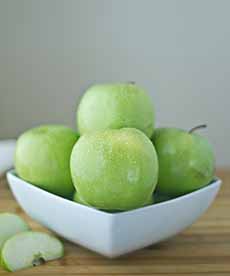
[5] The recipe uses a Granny Smith apple. You can substitute Cortland (photo © Lisa Solonynko | Morguefile).
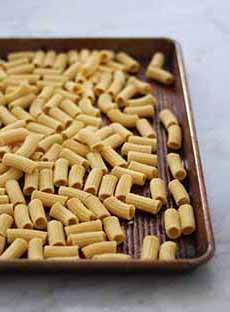
[6] Homemade rigatoni mezzi rigatoni made with the extruder attachment on a Kitchen Aid mixer. Here’s the recipe from The Baker Chick (photo © The Baker Chick).
|
|
October is National Pasta Month. We have a fall-focused recipe using mezzi* rigatoni, or half-size rigatoni (photo #2), from Delallo.
The recipe for Pasta Carbonara With Bacon & Apples is below, after a discussion of rigatoni—a cut that many non-cooks can confuse with penne.
WHAT ARE RIGATONI?
Rigatoni (righ-gah-TOE-knee) are tube-shaped ridged pasta (see the ridges close up in photo #3).
Ridged pasta, or pasta rigate (rih-GAH-tay) in Italian, is a style that developed during the Industrial Revolution. New mechanization enabled more sophisticated machine shapes, made with extruders.
While some pre-industrial artisans labored to make ridged pasta, the effort required was not likely cost-effective.
But voilà: Bring on the machinery and bronze dies to extrude pasta, and you’ve got all the ridged pastas (and other shapes) one can desire.
Ridged pasta was an immediate hit. It enabled chunky meat and vegetable sauces to better cling to the surface, lodging in the grooves. That was a bonus for the tubular pastas, which allow the sauce to be inside and outside.
According to Barilla and The Pasta Project, rigatoni were created in Rome in 1930.
While this may seem long ago to some, it is relatively recent given that pasta has been made in Italy since the 8th century (the history of pasta).”
Rigatoni became a mainstay in Lazio (the province of which Rome is the capital). Of note is the classic Roman dish La Pagliata (also called Pajata), made with the intestines of an unweaned calf (one only fed on its mother’s milk. Here’s more about it.
Rigatoni traveled to southern Italy, where they became a favorite combined with local ingredients.
Rigatoni Vs. Penne
Rigatoni are are larger than penne and ziti. They are made in varying lengths and diameters, based on the manufacturer.
Typical rigatoni are approximately 1-1/2 inches in length and 1/2 inch in diameter. Mezzi Rigatoni are approximately 5/8 inch in length with a diameter of 1/2 inch.
The differences between rigatoni and penne:
Rigatoni is a pasta rigate. It has ridges down the length of the tube.
The ends of the rigatoni tubes are square-cut, instead of diagonally for penne.
Rigatoni are larger than penne.
Penne is made in both smooth and rigate styles. Rigatoni are only rigate.
Rigatoncini are a smaller rigatoni, close to the size of penne.
The word rigatoni comes from the Italian word rigato, meaning ridged or striped (which should come as no surprise at this point in this article).
Other rigate pasta include:
Conchiglie (shells) that are made in rigate and smooth versions.
Pipe (PEE-pay, meaning pipe or tube), is a snail shape is similar to lumaconi but with ridges.
Tortiglioni are larger than rigatoni, with deeper grooves.
Manicotti, meaning “little sleeve.” They are the largest†of the tube pastas, great for stuffing.
And now, the recipe!
RECIPE: RIGATONI CARBONARA WITH BACON & APPLES
Ingredients
1 egg, plus 2 additional egg yolks
1-1/2 cups grated parmesan cheese/li>
1 tablespoon extra virgin olive oil
3 cloves garlic, smashed
1/2 pound bacon, diced
1 small onion, diced
1 Granny Smith apple, chopped into ¼” chunks
Red chili pepper flakes
5 quarts salted water
1-pound package of DeLallo Mezzi Rigatoni (photo #2) or substitute
Coarse sea salt (substitute kosher salt)
Freshly=ground black pepper
Preparation
1. BEAT the eggs and cheese together in a large serving bowl. Add salt and pepper. Set aside.
2. HEAT the olive oil and garlic in large saucepan. Once the garlic begins to turn golden, remove it from the oil and discard. Add the bacon to the pan and sauté until it becomes golden brown, about 6 minutes. Remove with a slotted spoon and set aside.
3. ADD the onion to the pan and cook until it begins to soften, about 6 to 8 minutes. Add the apple to the pan. Cool together with the onions for 3 to 4 minutes.
4. ADD the bacon back to the pan and season with chili pepper to taste. Meanwhile…
5. BRING 5 quarts of salted water to a boil. Cook the pasta according to package instruction. Drain, reserving 2 cups of the pasta water to finish the sauce.
6. COMBINE the hot pasta with the apple mixture and oil in the serving bowl with the eggs and cheese. Toss to coat and to gently cook the eggs with the heat of the pasta. Once combined…
7. ADD about 1/4 cup of the reserved hot pasta water and toss. If the pasta appears too dry, add another splash of pasta water. Serve immediately sprinkled with additional cheese.
> THE HISTORY OF CARBONARA
> THE HISTORY OF PASTA
> THE DIFFERENT TYPES OF PASTA
|

